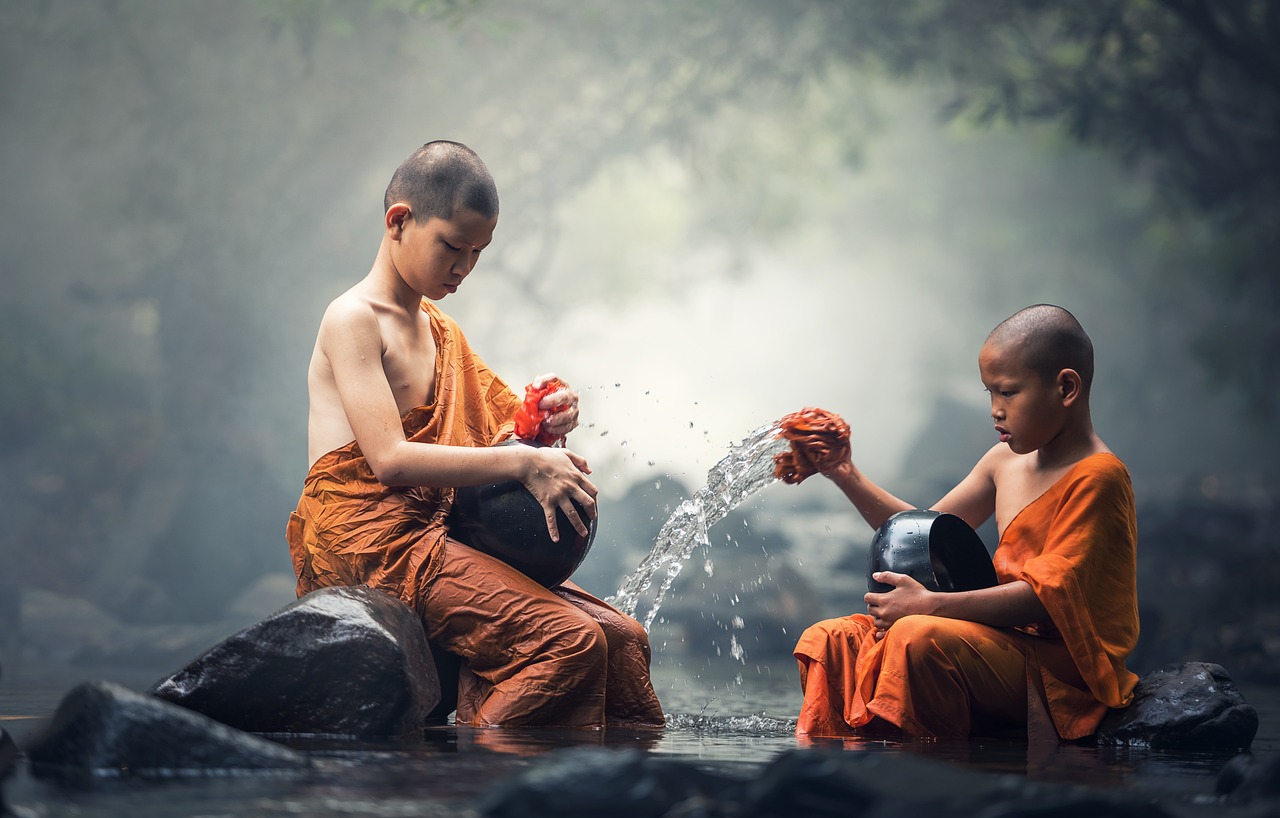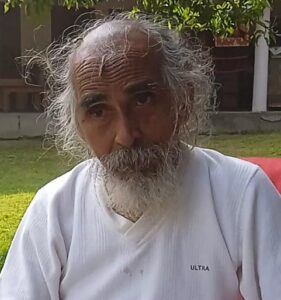
By Swami Shivanand Saraswati*
Life flows when rivers do!
भूमिरापस्तथा वायुरग्निराकाशमेव च।
गुणोत्तराणि सर्वाणि तेषां भूमि: प्रधानत: ॥ महाभारत भीष्म पर्व ५/४॥
(Bhoomirapastatha vayuragnirakashmev ch।
gunottarani Sarvani tesham bhoomi: pradhanat:।। Mahabharat Bheeshma Parv 5/4।।)
Advait Vedant explains the 5 natural elements, also known as Panch Tatva or Panch Mahabhoot. These are Earth (Prithvi), Water (Jal), Air (Vaayu), Fire (Agni) and Sky (Aakash). These 5 elements constitute the entire Universe. Everything, including the bodies of all living beings, emerges from Panch Tatva and will merge back once their worldly time is over. This infinite equilibrium of nature manifests itself in physical forms which we experience through our senses and consciousness.
In 1580, Frenchman Bernard Palissy theorized that the atmospheric water cycle is a closed system, meaning water neither leaves nor enters Earth. He observed the presence of fresh-water wells on islands and inferred that there must be some way (rain or underground) through which fresh water reaches the islands despite being surrounded by salty ocean on all sides.
His work became the foundation of the new-age water cycle, finalized in the 19th century. It was accepted and understood with certainty that Rivers (Jal) originate from ice-capped mountains (few rivers originate from groundwater), course the Earth (Prithvi) and reach the sea. Some water from rivers and oceans is evaporated by the Sun’s heat (Agni), forms clouds in the Sky (Aakash) that traverse through Winds (Vaayu) and finally drops as rain to perpetually feed the rivers and groundwater on Earth’s back. Snow, rivers, clouds, sea and underground water are all forms of the same water.
“All the rivers run into the sea, Yet the sea is not full; To the place from which the rivers come, There they return again.” – Ecclesiastes 1:7, Bible KJV
Thus, all life ever originated on Earth exists within the confines of this equilibrium of Panch Tatvas (Five Elements). The role of Prithvi, Jal, Vaayu, Agni and Aakash is vital in this life-sustaining water circulation.
In the late 19th century, French Chemist Henry-Louis Le Chatelier propounded a general principle about equilibrium in systems – if a dynamic equilibrium is disturbed by changing the conditions, the position of equilibrium shifts to counteract the change to re-establish the equilibrium.
In simple words, when or if the factors constituting a dynamic equilibrium are disturbed by external conditions, the forward and backward forces operating within that equilibrium shift in the opposite direction to offset the change till a new equilibrium is reached.
This is exactly the situation of the Earth today. In the mindless harnessing of natural resources, exponential human interference has caused obstruction in the normal forward reaction, i.e. flow of water from mountains to sea and backward reaction, i.e. precipitation back to earth. The fine point of balance that supports life in this equilibrium is disturbed and the result is climate change unfavourable to human life.
The key to climate correction lies in simplicity and common knowledge. In Shrimadbhagwad Gita and Atharvaveda, our sages have already elucidated the single most important ingredient of this incredible equation.
The free flow of Rivers
Let us see how the following set of Shlokas are an amazing tapestry of spirituality and science woven together, to become the cradle of life for mankind.
We begin with understanding our duties, first. Shrimadbhagwad Gita, Adhyaay (Chapter) 3, Shloka 10,
सहयज्ञा: प्रजा: सृष्ट्वा पुरोवाच प्रजापति:।
अनेन प्रसविष्यध्वमेष वोऽस्त्विष्टकामधुक।। 13|10 ।।
(Sahyagya: praja: srishtva purovach prajapati:।
anen prasvishyadhvamesh voऽstitvshtkamdhuk ।।13.10।।)
That means, at the beginning of creation, Prajapati Brahma created his subjects (God/Dev and Humans) and assigned them their duties. Brahma said, “By these Yagyas (or sacrifices), you will multiply, grow and thrive. This Yagya will be beneficial to you and bring you objects of your desire.”
In Sanatan Vedic culture, Yagya is a ritual performed in front of a sacred fire, with selfless devotion to God, or the Supreme Power. There are 3 components to Yagya: Havishya (i.e. the offering or sacrifice; also called Aahuti), Kriya (the action of offering Havishya to fire) and Mantra (chanting the prayers alongside).
Ahead in the same Adhyaay, Shloka 14:
अन्नाद्भवन्ति भूतानि पर्जन्यादन्नसम्भव:।
यज्ञाद्भवति पर्जन्यो यज्ञ: कर्मसमुद्भव:।।3.14।।
(Annadbhavanti bhootani parjanyadannsambhav:।
Yagyadbhavati parjanyo yagya: karmsmudbhav:।।3.14।।)
This means all living beings subsist on food, and food is produced by rain. Rains come from the performance of sacrifice (Yagya), and sacrifice is done by the performance of prescribed duties (our actions).
Now, the question comes, what is this Yagya that Prajapati Brahma is talking about?
The answer is found in Atharvaveda Kaand (Chapter) 19 : 1st Sookta: ऋषि: – ब्रह्मा; देवता – यज्ञ:, चन्द्रमा: (Rishi: -Brahma; Devta – Yagya:, Chandrama:)
Prajapati Brahma the Creator is the Rishi (Saint) of Mantras in this Sookta. Yagya is the Devta (God). Brahma created the world and is doing Yagya.
1st Mantra:
संसं स्रवन्तु नद्या: सं वाता: सं पतत्रिण:।
यज्ञमिमं वर्धयता गिर: सांस्राव्येण हविषा जुहोमि ।।1।।
yagyamimam vardhayata gir: sansravyen havisha juhomi ।।1।।)
For Prajapati Brahma’s Yagya to continue, nature must flow. First, the rivers on this Earth should flow in their natural course. In the rivers, fishes be able to swim freely. In the skies above the rivers, birds be able to fly, and wind be able to flow freely. Only then, Prajapati Brahma’s Yagya will be successful, and the world will thrive. The rivers, birds, fish, and wind are the offerings, and their continuous flow is the action of this Yagya.
The burbling, murmuring, and whooshing sounds of a river and free wind are the voices with which Brahma is doing the Yagya (Mantra).
2nd Mantra :
इमं होमा यज्ञमवतेमं सांस्रावणा उत। यज्ञमिमं वर्धयता गिर: सांस्राव्येण हविषा जुहोमि ॥ ॥२॥
(imam homa yagyamvetamam sansravana ut. yagyamimam vardhayata gir: sansravyen havisha juhomi ॥2॥)
Prajapati Brahma urges the gods and mankind alike to support and safeguard this life-generating Yagya with devotion.
When we owe our life to the Creator, it is our duty to ensure that Brahma’s Yagya continues uninterrupted. Our conscious intelligence and purposeful actions are required for this work. While Devata is required to take care of the cosmic flow of water, man is ordered to ensure natural flow in the earthen atmosphere.
रूपमरूपं वयोवय: सरभ्यैनं परि ष्वजे । यज्ञमिमं चतस्त्र: प्रदिशो वर्धयन्तु सांस्राव्येण हविषा जुहोमि ॥३॥
(roopamroopam vayovays: sanrabhyainam pari shvaje । yagyamimam chatastra: pradisho vardhyantu sansravyen havisha juhomi ॥3॥)
During her journey from snow-capped mountains to the seas, the river morphs into multiple forms. She confluences with tributaries and splits into streams, feeding the ponds and the Earth. The free, uninterrupted, naturally divine flow of a river is the Yagya of Prajapati Brahma. Our life is the fruit of this Yagya.
Through the above Mantras, 2 key directives emerge :
- The river must flow without obstruction, the fish must swim without interruption, and there should be space for wind and birds to fly alongside! The repetition of letters संसं स्रवन्तु (samsam sravantu) reiterate this.
- We must accept the different forms of the river, and embrace all of them wholeheartedly. A small pond is as significant as a mighty river.
All life revolves around water. While water is the source of life, if uncared for it can also cause death and destruction. The 2nd Sookta in the same 19th Kaand of Atharvaveda throws light on how to ensure that water is always beneficial for our lives.
…to continue
*Founder of Matri Sadan, Haridwar which is an organization fighting against corruption and environmental disaster.







What an amazing article. This is the culture of Indian knowledge system